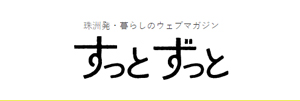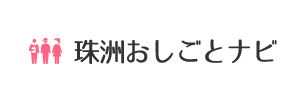本文
Salt-making Video Translation
Making Agehama-Style Salt
(Audio script: Japanese text for reference only)
揚げ浜塩田の1日は、海の水を汲み上げることから始まります。
Days begin early on the salt fields of Suzu Enden Mura, as seawater must be collected in wooden buckets from nearby coastal waters.
砂を踏み締め何度も何度も海の水を運びます。
Workers carry the buckets of seawater to a sand-covered field to a large tub called a shikoke.
そして、引桶(しこけ)と呼ばれる桶に海水を貯めていくのです。
Each bucket holds around 36 liters of water. It takes 10 trips or more to fill the shikoke, which can hold 800 liters of water.
集めた海水を砂の上に撒きます。
Workers scoop up water from the shikoke with smaller ochoke buckets. The bucket has a conical shape that makes it easier to disperse the water evenly across the sand.
太陽の熱で水分が蒸発し、砂の上には塩分が残ります。
After all the water has been dispersed, the sand is raked and left until salt crystals form through evaporation. Raking the sand increases its surface area which speeds up the natural evaporation process. The sun is essential in agehama salt production.
その塩分をたっぷりと含んだ砂を一箇所に集めます。
It takes around eight hours for the water to completely evaporate and the salt crystals to form. After this, the salt-laden sand is swept into a pile in the center of the salt field.
集めた砂は、沼井(ぬい)と呼ばれる容器に入れ、再び海水を汲みに海へ向かいます。
The salt-sand mix is then scooped into a wooden box called a nui to be filtered. This process requires more seawater, so the workers head back to the sea.
沼井(ぬい)の砂に海水を注ぎ塩を溶かします。
The workers pour the freshly collected seawater over the salt-laden sand in the box to dissolve the salt. The dissolved salt filters through the sand and collects as a concentrated brine in a reservoir at the bottom of the box.
こうして海水よりも何倍も濃い塩水、かん水ができるのです。
After the concentrated brine is collected, the sand is returned to the salt field.
そしてかん水を火にかけ、何時間もかけて煮詰めます。
Workers transfer the brine to a large cast iron kama pot with a capacity of around 600 liters. The brine is then boiled down for about 6 hours until it reaches close to 24 percent salinity.
夕暮れ、塩田では明日に向けて塩作りの準備が始まります。
As the sun sets, the workers tend to the salt field and rake the sand to ready it for the next day’s work.
かん水は何度か濾過して不純物を取り除き、また火にかけます。
During the night, the boiling brine is carefully monitored and filtered several times to remove impurities.
こうした作業が夜を徹して続けられます。
Boiling the brine inside a kamaya thatched hut is a hot, smoky process that needs constant watching overnight.
夜明け、ようやく塩が出来上がりました。
The brine is left to cool and is filtered, before being boiled for a second and final time to further increase the salinity. Salt crystals bloom across the surface of the brine and are scooped off and drained of any remaining liquid. The resulting dry salt crystals are sorted and packed for sale.
揚げ浜式塩田による塩作りは奈良時代から1,200年以上の歴史を経て、今も変わりなくこの珠洲市に残されているのです。
Salt has been produced in Japan in this way for over 1,200 years. In Suzu City, the ancient techniques of agehama-style salt production continue, largely unchanged.











 珠洲市役所
珠洲市役所






